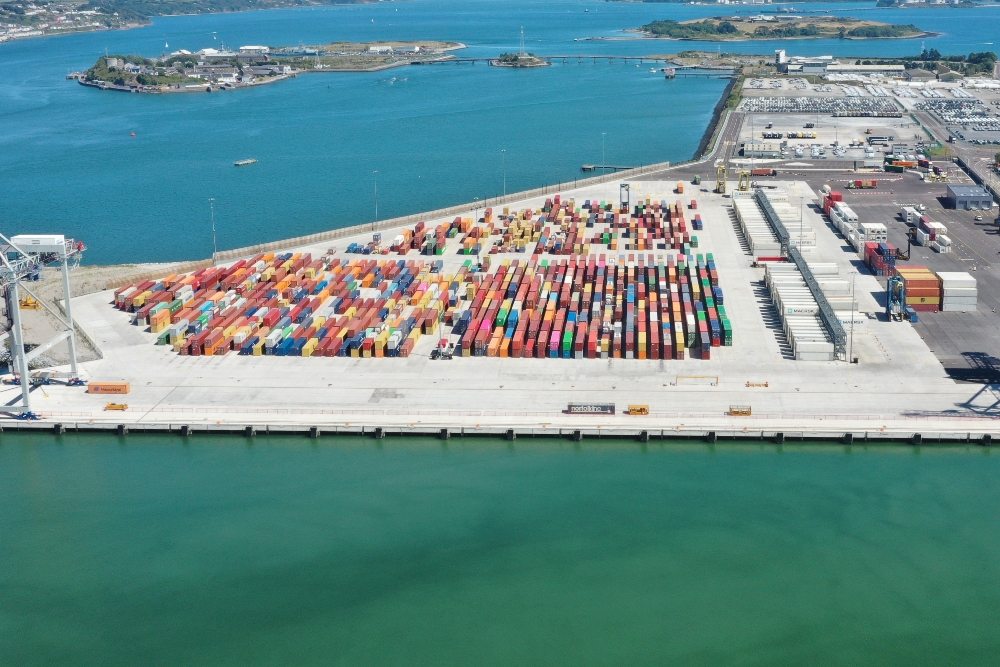Bank of Ireland’s chief economist Conall Mac Coille says investors remain focused on the sustainability of the UK’s finances.
Sterling has lagged the euro and other currencies in recent weeks, during the risk-off moves in financial markets as investors have reduced their dollar exposures. This is despite a notable steepening of the UK yield curve, 30-year gilt yields now at 5.35%, their highest level since the late-1990s.
This shows UK assets have failed to benefit from any perception Britain is relatively insulated from a global trade war. True, the Bank of England is expected to cut rates to 3.75% by end-2025 to support the economy.
“So Sterling is unlikely to see a sharp rebound against the Euro in the near-future, absent a far broader recovery in financial market risk appetite”
However, investors remain focused on the sustainability of the UK’s public finances. Specifically, that plans to gradually rein-in public sector borrowing from 4% of GDP appear to rely on unrealistic assumptions on spending and optimistic projections for GDP growth.
So Sterling is unlikely to see a sharp rebound against the Euro in the near-future, absent a far broader recovery in financial market risk appetite.
Pounds and pence
Sterling lags behind: Sterling has depreciated sharply against the euro through April, the exchange rate at 85.9p this morning, having started the month at 83.5p. Despite appreciating to $1.32 against the dollar, sterling has lagged behind other currencies as risk-off moves following the imposition of US tariffs led investors to move away from dollar assets. UK assets clearly haven’t benefitted from any perception Britain will be relatively insulated from a global trade war. Rather, as in the US, concerns around the UK’s fiscal position and functioning of the gilt market persist.
Expectation for rate cuts put downward pressure on short-end of the curve: Options are currently fully pricing in three 25bp cuts from the the Monetary Policy Committee by end-2025, beginning at the next policy meeting on May 8th, and with a 45% probability of a fourth to 3.5% by March 2026. News this week that private sector regular earnings growth slowed to 5.9% in February and CPI inflation 2.6% in March, have encouraged this view, putting downward pressure on the short-end of the curve. Hence, 2-year gilt yields have fallen by 15bps since the beginning of April, now at 4%.
Concern around UK’s fiscal sustainability persist: Chancellor of the Exchequer Rachel Reeves’ March Fiscal Statement did little to rein-in the public finances. Public sector borrowing of 4% of GDP is expected in budget year 2025/26, forecast to gradually reduce to 2% of GDP by 2029, but relying on spending assumptions the Institute for Fiscal Studies (IFS) have deemed unrealistic and a pick-up in GDP growth to 1.9% in 2026. The Office for Budgetary Responsibility (OBR) has warned poor productivity performance could hinder the UK from achieving this expected rebound in GDP growth.
Long-end of the curve driven upwards: UK 10-year and 30-year gilt yields peaked on April 9th at 4.78% and 5.63% respectively. Though falling back since then, they remain well above the levels seen during the fall out from Liz Truss’ ‘mini-budget’ in 2022. The pick-up in term premia that investors now demand for holding duration on UK gilts has meant the 30-year yield is now at its highest level since the late 1990s, steepening the curve. Such has been the market volatility, the Bank of England put-off an auction of long-term gilts, due on April 14th, as part of its quantitative tightening (QT) programme.
-
Bank of Ireland is welcoming new customers every day – funding investments, working capital and expansions across multiple sectors. To learn more, click here
-
For support in challenging times, click here
-
Listen to the ThinkBusiness Podcast for business insights and inspiration. All episodes are here. You can also listen to the Podcast on:
-
Spotify
-
SoundCloud
-
Apple





